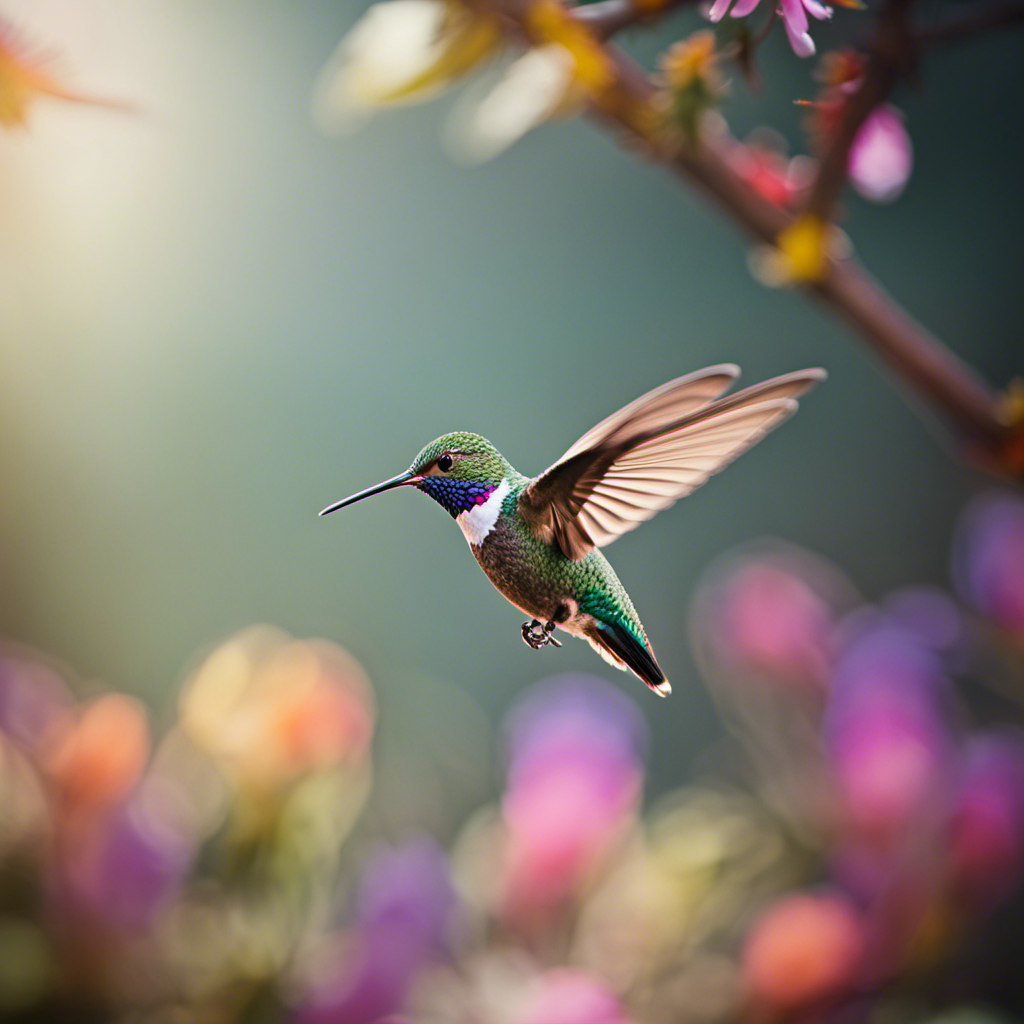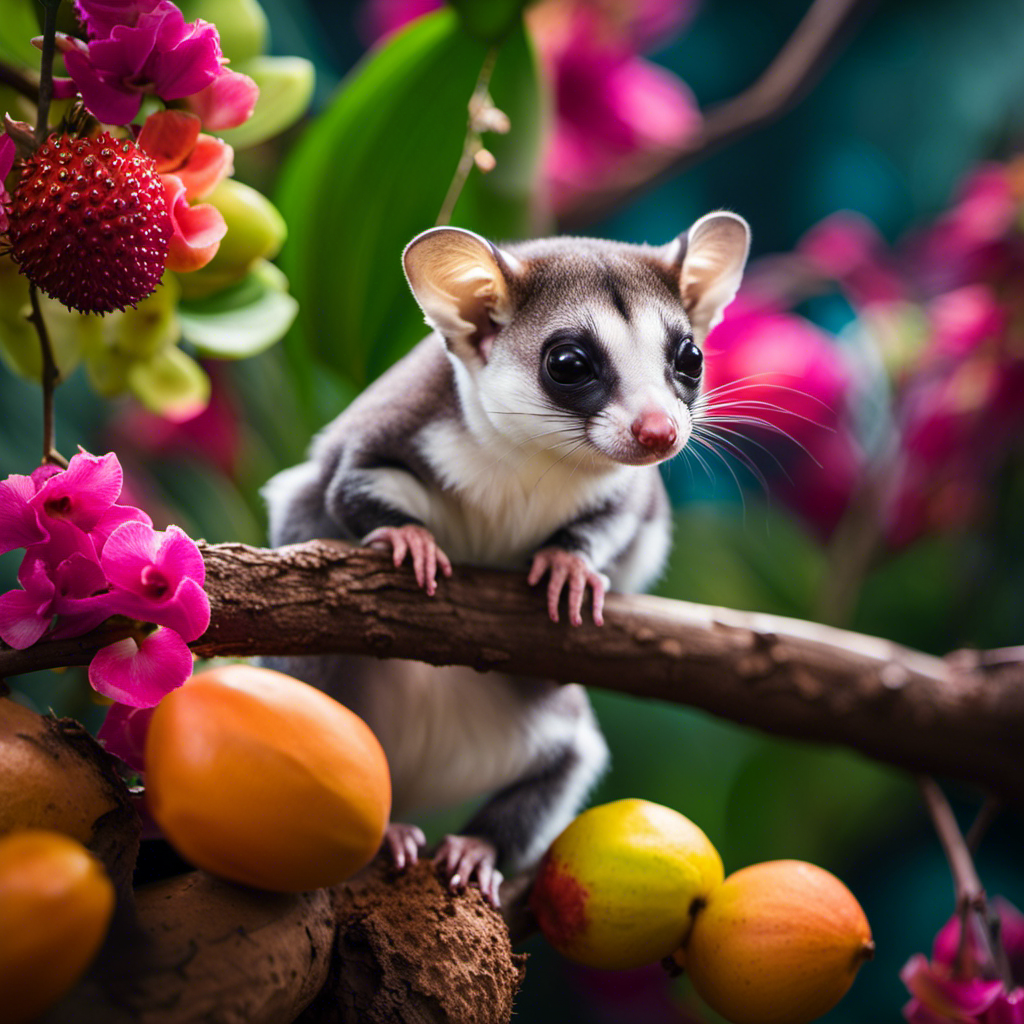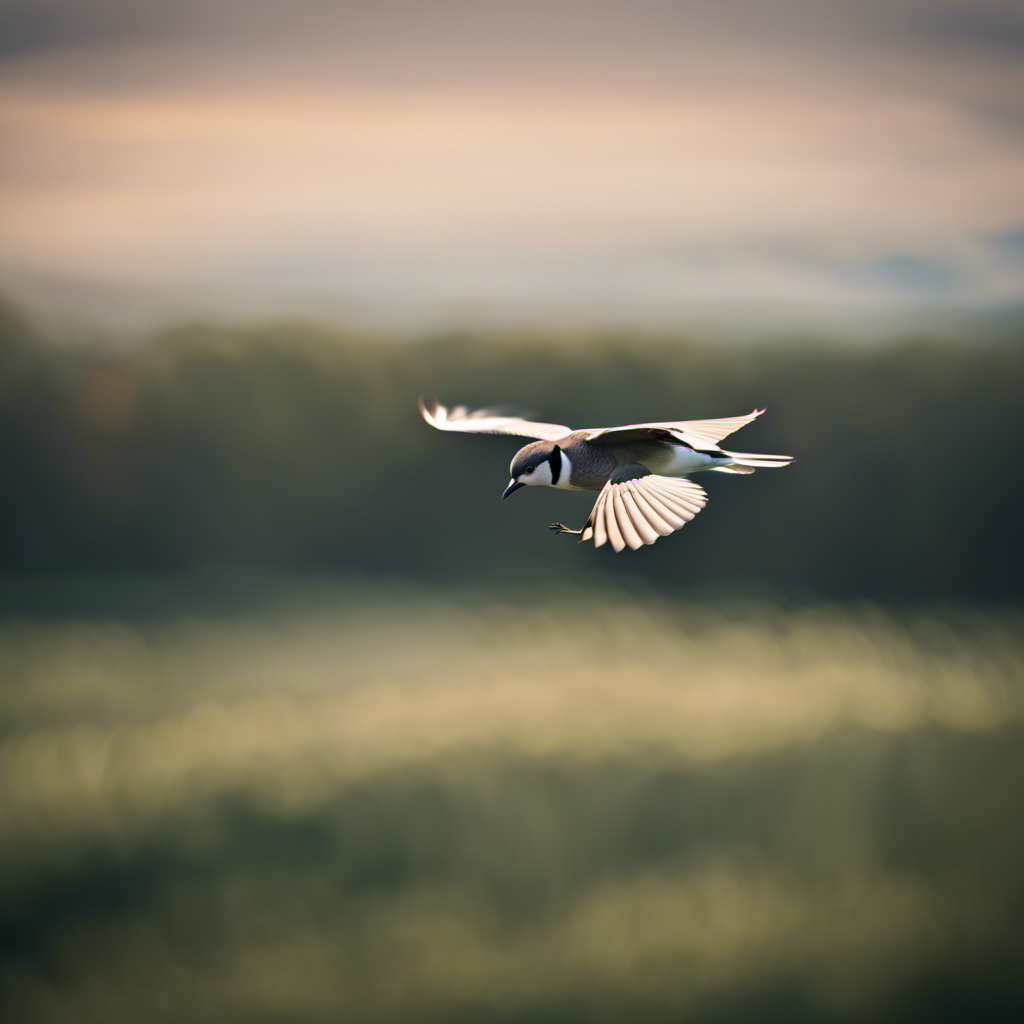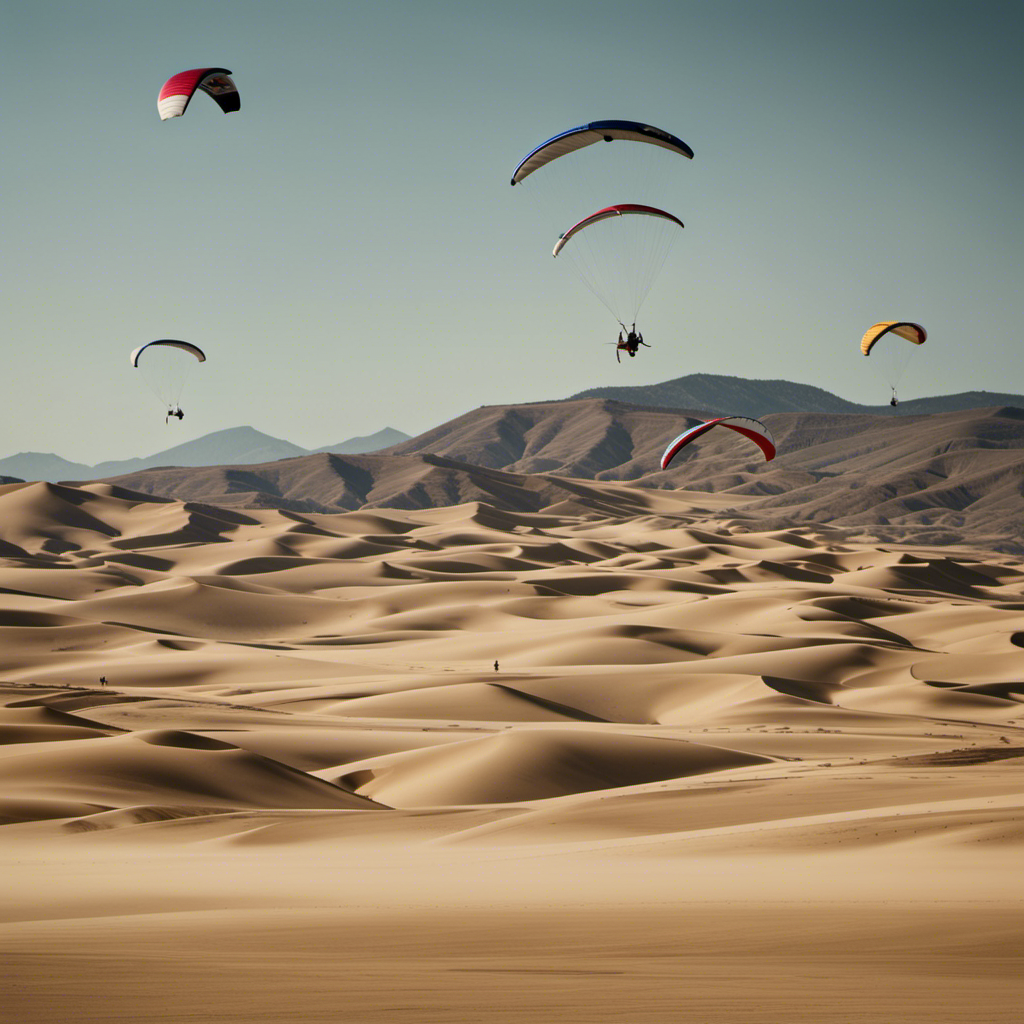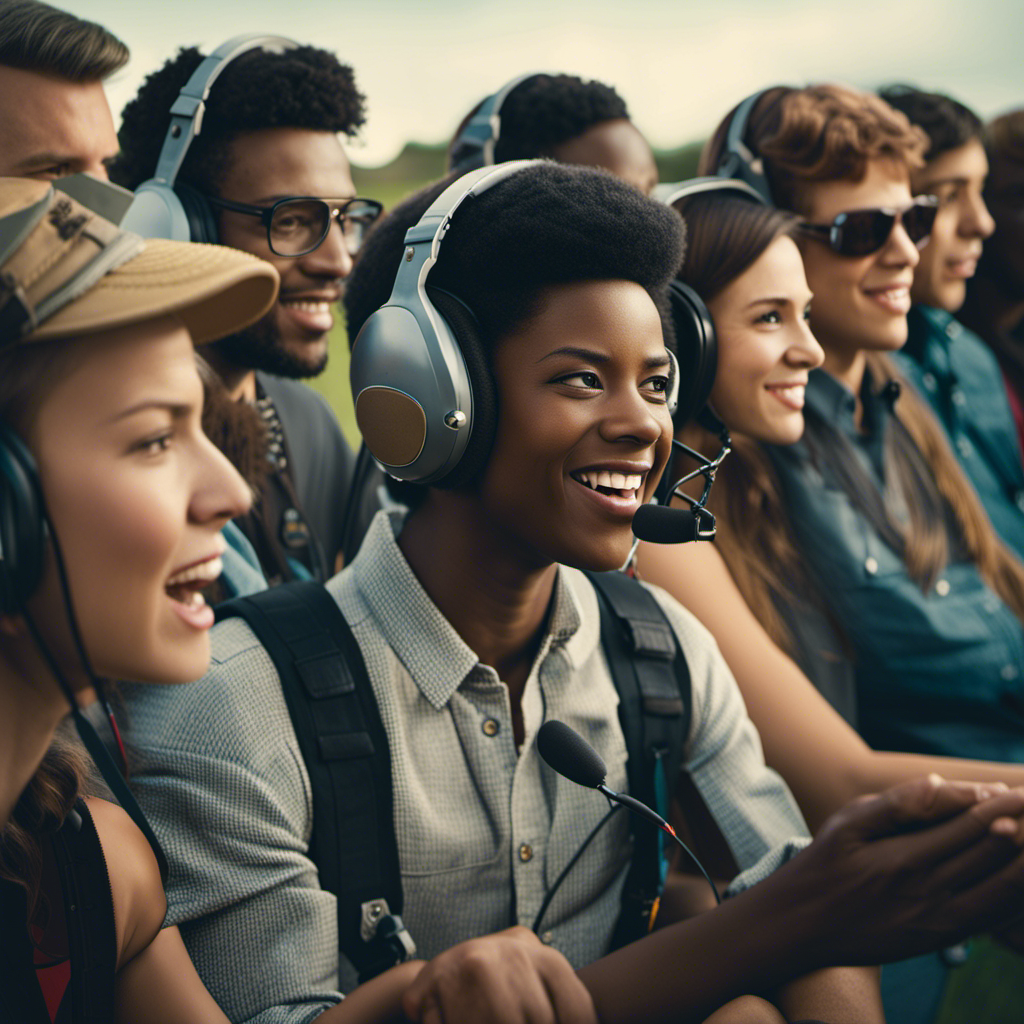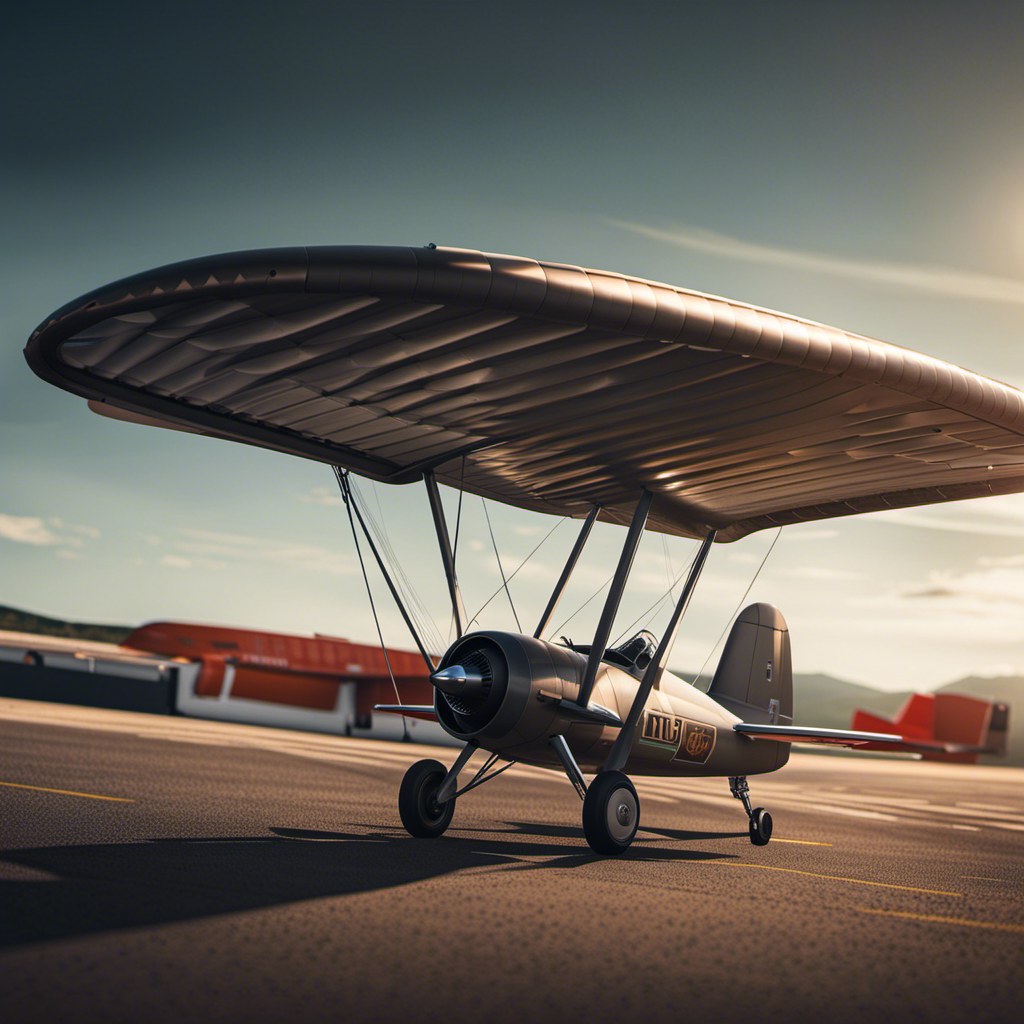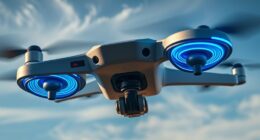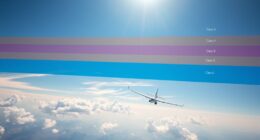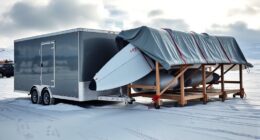I have always been mesmerized by the graceful beauty of gliding animals. Watching a majestic bird effortlessly glide through the sky without flapping its wings makes me wonder: is gliding a form of flying?
In this article, we’ll delve into the physics of gliding and flying, explore the key differences between the two, and examine remarkable achievements in both realms.
Join me on this journey as we unravel the distinctions and similarities between gliding and flying.
Key Takeaways
- Gliding is a form of flight that relies on air currents and gravity, while flying involves engines for thrust and altitude maintenance.
- Gliding utilizes the concept of lift, which is created by air pressure differences on wings, while aerodynamics and thrust are key in flying.
- Gliders have long wings and a streamlined shape, while airplanes and helicopters are examples of fixed-wing and rotary-wing aircraft, respectively.
- Gliding has been a popular recreational activity, while powered aircraft have achieved long-distance travel and revolutionized flying.
Definition of Gliding and Flying
Do you know if gliding means flying?
Gliding is a form of flight where an aircraft maintains its altitude using air currents, without the need for an engine. It involves using the natural forces of the atmosphere to stay airborne. Gliders, also known as sailplanes, are designed with long wings and a streamlined shape to maximize lift and minimize drag. Unlike powered flight, gliders rely on gravity and the air’s upward movement to stay aloft.
The main difference between gliding and flying is that gliding doesn’t require any engine power, while flying typically involves the use of engines to generate thrust and maintain altitude. Understanding the definition and difference between gliding and flying is essential before delving into the physics of gliding.
The Physics of Gliding
Gliding involves utilizing the principles of physics to stay airborne without flapping wings. The physics of gliding revolves around the concept of lift. Lift is the force that allows an object to stay aloft in the air. It is created by the difference in air pressure between the top and bottom surfaces of the glider’s wings. By generating enough lift, gliders are able to overcome the force of gravity and stay in the air for extended periods of time.
There are various techniques used in gliding to maximize lift, such as adjusting the angle of attack and utilizing thermals, updrafts of warm air. Understanding these principles is crucial for successful gliding.
Transitioning into the physics of flying, the same principles of lift apply, but with the addition of propulsion from engines.
The Physics of Flying
When it comes to understanding the physics of flying, two key points to consider are aerodynamics and thrust.
Aerodynamics refers to the study of how air moves around an object, while thrust is the force that propels an object through the air.
Additionally, it’s important to explore the different types of flight, such as fixed-wing and rotary-wing, as each has its own unique characteristics and mechanics.
Aerodynamics and Thrust
Aerodynamics and thrust play a crucial role in determining how an object flies. Understanding the principles of aerodynamics is essential for generating lift, the force that opposes gravity and allows an object to stay airborne.
Lift is created by the shape of the object, known as the airfoil, and the movement of air around it. As air flows over the curved upper surface of the airfoil, it moves faster than the air flowing underneath, creating a pressure difference. This pressure difference generates lift, lifting the object off the ground.
Thrust, on the other hand, is the force that propels the object forward, overcoming drag. By generating enough thrust, an object can achieve and maintain flight.
With this understanding of aerodynamics and thrust, we can explore the different types of flight, such as fixed-wing and rotary-wing, which rely on these principles to stay airborne.
Different Types of Flight (Fixed-Wing, Rotary-Wing, etc.)
Understanding the principles of aerodynamics and thrust allows you to differentiate between the different types of flight, such as fixed-wing and rotary-wing. When it comes to types of aerial locomotion, there are a few key distinctions to consider:
-
Fixed-wing flight: This type of flight involves using wings to generate lift and forward propulsion. Airplanes and gliders are examples of fixed-wing aircraft. Fixed-wing flight offers the advantage of sustained and controlled flight, allowing for long-distance travel and efficient use of fuel.
-
Rotary-wing flight: This type of flight is characterized by the use of rotating wings, or rotor blades, to generate lift and propulsion. Helicopters and quadcopters are examples of rotary-wing aircraft. Rotary-wing flight offers the advantage of vertical takeoff and landing, as well as the ability to hover in one place.
-
Gliding: Gliding is a type of flight that relies on the natural forces of lift and gravity to maintain altitude and forward motion. Gliders, also known as sailplanes, are designed to maximize lift and minimize drag. Gliding offers the advantage of extended flight time without the need for an engine, making it a popular recreational activity.
Understanding these different types of flight is crucial in distinguishing between gliding and flying, which will be explored in the next section.
Key Differences Between Gliding and Flying
When it comes to discussing the key differences between gliding and flying, there are several important factors to consider.
First, the source of propulsion is a crucial distinction. While flying typically involves the use of an engine or some form of thrust to propel an aircraft forward, gliding relies solely on gravity and the natural forces of lift and drag.
Additionally, the ability to sustain flight is another differentiating factor. While a glider can sustain flight for a limited period of time by utilizing updrafts and thermals, a powered aircraft has the ability to fly for longer durations due to its propulsion system.
Lastly, maneuverability and control play a significant role in distinguishing between gliding and flying. A powered aircraft generally offers more control and maneuverability options, as it can adjust speed, altitude, and direction through the use of various controls and systems, whereas a glider has limited control and relies more on the natural forces of flight.
Source of Propulsion
To generate lift and propel yourself through the air, you’ll need a source of propulsion, such as an engine or wings.
When it comes to gliding, a source of lift is crucial. Gliding animals, like flying squirrels or sugar gliders, rely on their body structure to create lift. They have flaps of skin called patagia that stretch between their limbs, allowing them to glide through the air. By extending their limbs and spreading out their patagia, these animals can catch air currents and stay airborne for extended periods.
However, gliding alone does not mean sustained flight. While gliding animals can cover significant distances, they ultimately lack the ability to sustain flight without additional propulsion. Transitioning from gliding to sustained flight requires the development of more advanced mechanisms.
Ability to Sustain Flight
Moving on from the discussion of the source of propulsion, let’s now explore the ability of gliding creatures to sustain flight. Gliding is the process in which an organism maintains a controlled descent through the air without any active flapping of wings. This sustained glide is made possible by the unique wing morphology of gliders. Here are four key factors that contribute to their ability to stay airborne:
-
Wing Shape: Gliding creatures possess specialized wings that are elongated and have a high aspect ratio, allowing for increased lift and reduced drag.
-
Wing Span: Longer wingspan provides a larger surface area for generating lift, enabling gliders to stay aloft for extended periods.
-
Glide Ratio: Gliders have a high glide ratio, which is the distance traveled horizontally compared to the loss in altitude. They can cover significant distances while losing minimal height.
-
Streamlined Body: Gliding creatures have streamlined bodies that minimize air resistance, further enhancing their ability to sustain flight.
With the ability to glide, organisms have unlocked a unique way to navigate their environment. Now, let’s delve into the next section, which explores the maneuverability and control of gliding creatures.
Maneuverability and Control
Gliders are able to control their flight trajectory and make precise maneuvers by adjusting the position and shape of their wings. Maneuverability techniques are crucial for these animals to navigate through their environment and avoid obstacles.
By altering the angle of their wings or flapping them asymmetrically, gliders can change the direction and speed of their flight. They can also use their tails and bodies to stabilize their movement and maintain balance.
Control techniques involve the coordination of different body parts, such as wings, tail, and limbs, to achieve the desired flight path. These techniques allow gliders to adapt to varying wind conditions and make quick adjustments during flight.
Understanding these maneuverability and control techniques is essential to fully comprehend the capabilities of gliding animals.
Examples of Gliding Animals
You might be surprised by the diverse range of animals that can glide, such as flying squirrels and sugar gliders. Gliding is a remarkable adaptation that allows these animals to travel through the air without true flight.
Here are some examples of animals that use this impressive skill:
-
Colugos: These gliding mammals have large flaps of skin called patagia that stretch between their limbs, allowing them to glide effortlessly through the rainforest.
-
Draco lizards: These unique reptiles have extended ribs that support wing-like flaps of skin, enabling them to glide from tree to tree in search of prey.
-
Flying fish: Despite their name, these fish don’t actually fly. Instead, they have enlarged pectoral fins that act as wings, allowing them to glide above the water’s surface to escape predators.
-
Paradise tree snakes: These snakes possess a remarkable ability to flatten their bodies and glide from tree branches to catch unsuspecting prey.
These examples of gliding animals demonstrate the incredible diversity and adaptability found in the animal kingdom. However, gliding is not the same as true flight. In the next section, we will explore examples of animals that can truly fly.
Examples of Flying Animals
Flying animals, such as birds and bats, have evolved various mechanisms to achieve true flight. Birds have feathers that provide lift and allow them to soar through the air, while bats have wings made of skin that they can manipulate to fly.
But there are also other animals that can fly, like flying squirrels. These creatures have a membrane of skin called a patagium that stretches between their limbs, allowing them to glide through the air. While not true flight, their ability to glide is still impressive.
Another example of flying animals is bird migration. Birds have developed the ability to fly long distances to find food and suitable breeding grounds. They use a combination of soaring, flapping, and gliding to cover thousands of miles during their annual migrations.
Now, let’s explore the incredible achievements humans have made in gliding.
Human Achievements in Gliding
When it comes to gliding, there are several impressive accomplishments that humans have made.
-
The first human powered glider, known as the Gossamer Condor, successfully flew a figure-eight course in 1977, proving the feasibility of human powered flight.
-
Gliding competitions have become popular worldwide, where pilots showcase their skills and compete for distance, duration, and accuracy.
-
In 1991, the first human powered aircraft, the Daedalus, flew 115.11 miles from Crete to Santorini, breaking the world record for human powered flight.
-
The Solar Impulse 2, a solar-powered aircraft, completed a historic around-the-world flight in 2016, demonstrating the potential of renewable energy in aviation.
These achievements in human powered gliding have paved the way for even greater accomplishments in flying.
Human Achievements in Flying
Aviation history is filled with remarkable milestones that have shaped the way we travel by air. From the Wright brothers’ first powered flight to the development of commercial airlines, these achievements have revolutionized the world of aviation.
Today, modern air travel is fueled by advanced technology, allowing for faster, safer, and more efficient flights.
Aviation History and Milestones
The Wright brothers’ first successful flight at Kitty Hawk marked a major milestone in aviation history. Their achievement in 1903 paved the way for countless aviation advancements and historical milestones in the years that followed.
From the development of more efficient engines to the construction of larger and faster aircraft, aviation has seen remarkable progress. The invention of the jet engine in the 1930s revolutionized air travel, allowing planes to reach higher speeds and altitudes.
The introduction of commercial airlines in the mid-20th century made air travel accessible to the masses, turning it into a global transportation phenomenon.
Today, modern air travel and technology continue to push the boundaries of what is possible, with innovations such as supersonic flight and electric aircraft on the horizon.
Modern Air Travel and Technology
Modern air travel and technology have revolutionized the way people around the world can experience flight. With advancements in aviation, we now have access to incredible technologies that enhance our flying experience. Here are a few examples:
- In-flight entertainment systems that offer a wide range of movies, TV shows, and music to keep passengers entertained.
- Wi-Fi connectivity that allows passengers to stay connected and work or browse the internet during their flight.
- Electronic ticketing systems that make it easier and more convenient to book and manage flights.
These modern technologies have not only made air travel more enjoyable but also more efficient and accessible. From online check-ins to automated baggage handling, these advancements have streamlined the entire process.
As we delve into the applications and uses of gliding, we can see how these technologies have influenced this aspect of aviation.
Applications and Uses of Gliding
Gliders and sailplanes are aircraft that are designed to fly without an engine, relying solely on the natural forces of air currents and thermals. They are commonly used for recreational and sport purposes, allowing pilots to experience the thrill of soaring through the sky.
Additionally, gliding plays a significant role in scientific research, as it provides a unique platform for studying atmospheric conditions, meteorology, and climate patterns.
Gliders and Sailplanes
Did you know that gliders and sailplanes can stay in the air for hours without an engine? It’s truly remarkable how these aircraft can harness the power of nature to soar through the sky.
Gliding competitions showcase the incredible skill and precision of pilots as they navigate through the air currents, striving for maximum distance and duration.
The benefits of gliding for mental health are numerous. The serenity and tranquility of flying silently through the air can provide a sense of calm and relaxation, reducing stress and anxiety. Additionally, the focus and concentration required during gliding can help improve cognitive abilities and enhance mental clarity.
Gliding for recreational and sport purposes allows individuals to experience the exhilaration of flight and connect with nature in a unique and thrilling way.
Gliding for Recreational and Sport Purposes
Have you ever experienced the sheer exhilaration of soaring through the sky in a glider or sailplane for recreational or sport purposes?
Recreational gliding involves taking to the air in a glider purely for the enjoyment of flying. It allows individuals to experience the freedom and tranquility of being airborne, relying solely on the forces of nature to stay aloft.
Competitive gliding, on the other hand, is a sport that involves pilots navigating their gliders through a series of predetermined tasks and competitions. These tasks can include flying long distances, reaching specific altitudes, or even racing against other gliders.
Gliding for recreational and sport purposes offers a unique perspective on aviation, allowing individuals to explore the skies and push their skills to the limit.
Transitioning into the next section, let’s now delve into the fascinating world of gliding in scientific research.
Gliding in Scientific Research
Transition: Now that we have explored the recreational and sport aspects of gliding, let’s delve into the scientific realm where gliding has played a significant role in various research studies.
Current Subtopic: Gliding in Scientific Research
Gliding is not limited to humans alone; nature has its own gliding experts. Many animals have evolved unique adaptations to glide through the air, allowing them to travel efficiently and access resources otherwise inaccessible. Studying these gliding animals provides valuable insights into the principles of flight and aerodynamics.
In aviation history, gliding experiments paved the way for the development of powered flight. Early pioneers, such as the Wright brothers, used gliders to test their theories and refine their designs before adding engines to their aircraft. The lessons learned from these gliding experiments proved instrumental in the advancement of aviation technology.
To highlight the significance of gliding in scientific research, let’s explore some fascinating examples:
| Gliding Animal | Unique Adaptations |
|---|---|
| Flying Squirrel | Flaps of skin between limbs enable controlled gliding |
| Sugar Glider | Patagium membrane stretches between limbs for gliding |
| Draco Lizard | Elongated ribs and skin flaps form wings for gliding |
| Flying Fish | Large pectoral fins act as wings for gliding above water |
By studying these gliding animals and their unique adaptations, scientists gain a deeper understanding of flight mechanics and can apply this knowledge to various fields, including aeronautics and robotics.
Transition: Now that we have explored the scientific side of gliding, let’s move on to the conclusion, where we will examine the distinctions and similarities between gliding and flying.
Conclusion: The Distinctions and Similarities between Gliding and Flying
So, what you need to know is that gliding and flying may seem similar, but they have distinct differences. Here are three key distinctions between gliding and flying:
-
Aerodynamics: Gliding refers to the process of staying aloft in the air without flapping wings, relying on the principles of aerodynamics to maintain lift. Flying, on the other hand, involves actively flapping wings to generate lift and propel forward.
-
Duration: Gliding typically allows for shorter periods of sustained flight compared to flying. Gliders, such as flying squirrels or sugar gliders, use gliding as a means to travel between trees or escape predators. Flying animals, like birds or bats, have the ability to fly for extended periods, using their wings to soar through the air.
-
Energy expenditure: Gliding requires less energy compared to flying, as it relies on gravitational forces and air currents to maintain flight. Flying, however, requires continuous wing flapping and muscular effort, resulting in higher energy expenditure.
Understanding these distinctions is crucial in studying animal flight and the diverse adaptations that allow different species to navigate the skies.
Frequently Asked Questions
What are the different types of gliding animals?
There are several types of gliding animals, including flying squirrels, sugar gliders, and colugos. These animals have adaptations for gliding, such as flaps of skin called patagia that allow them to glide through the air.
How do animals use gliding as a survival mechanism?
Gliding has evolved in animals as a clever survival mechanism. Different adaptations allow them to navigate through the air effortlessly. Some animals use gliding as a hunting strategy, giving them advantages like surprise attacks, but it also comes with disadvantages.
Are there any notable human achievements in gliding?
There have been several notable human achievements in gliding. Gliding has been a popular sport for many years, offering benefits such as a unique and thrilling experience, the ability to explore new areas, and the opportunity to compete in competitions.
Can all birds fly, or are there some that can only glide?
Different types of gliding animals exist in nature, including birds and gliders. While most birds are capable of flying, there are some species, such as certain types of birds or flying squirrels, that can only glide through the air.
Are there any practical applications or uses for gliding in the modern world?
Practical applications for gliding in the modern world are numerous. Gliding technology has advanced, leading to uses in sports like hang gliding and paragliding, as well as in aerial surveys and wildlife research.
Conclusion
In conclusion, gliding and flying are distinct yet fascinating forms of locomotion. While gliding relies on the force of gravity and air currents to stay aloft, flying involves actively propelling oneself through the air.
One interesting statistic to note is that the world record for the longest glider flight is held by Klaus Ohlmann, who flew a distance of 2,463.8 kilometers in a single flight!
Understanding the physics and differences between gliding and flying allows us to appreciate the incredible capabilities of animals and humans in these modes of transportation.
